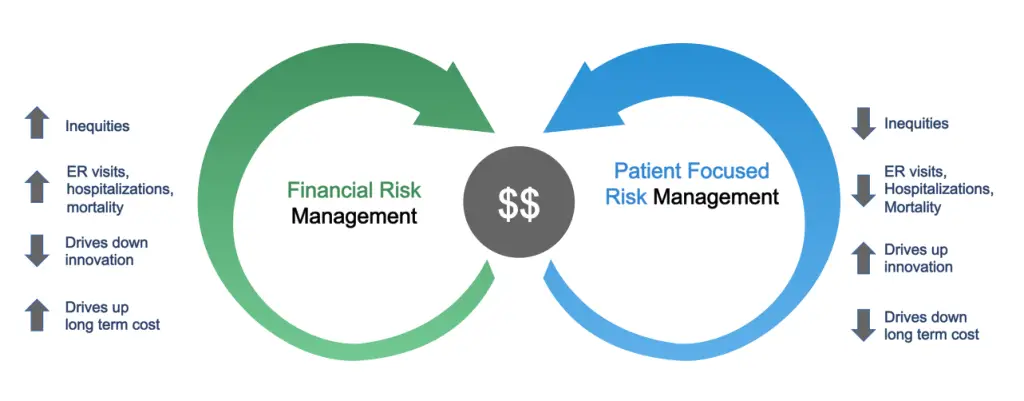Patient Risk: Shifting the Paradigm



The Purpose of Health Care
Reducing Patient Risk for Acute Events:
- Hospitalizations
- Emergency Room Visits
- Disabilities
- Mortality
While Conserving
High-Quality Long Lives
Our Legacy Health System Is Not Focused On Patient Risk
UNDERLYING PRINCIPLE IS CARE NEEDS TO BE RATIONED
- Has No Plan to Mitigate Patient Risk
- Issues policies that elevate patient risk without patient consent or reporting on negative outcomes
- Center for Medicare & Medicaid Innovation (payment reform, read financial risk, little attention to patient risk)
- Congressional Budget Office Scoring (increases patient risk while decreasing financial risk
- The United States Preventive Service Task Force (delays access to care to lower financial risk, elevates patient risk)
- Value Assessment (economic models that subordinated patient risk to financial risk)
- Medication Formularies ( designed to reduce financial risk, completely ignores patient risk)
- Risk Scoring for Capitation Payments (focused solely on financial risk no measurement of patient risk)
- Pay for Performance (once size fits all, elevate the risk for patient cohorts that need personalized care)
- National Coverage Decisions (evaluates financial risk with little attention to patient risk)
NO ABILITY TO ADDRESS INEQUITIES
Congressional Budget Office Estimates: An Example of Financial Risk Management
When the Congressional Budget Office makes its estimates of the budgetary effects of preventive care…takes into account any estimated savings that would result from greater use of such care as well as the estimated costs of that additional care…” some types of preventive care may increase longevity. Of course, that effect reinforces the desirability of such care, but it also could add to federal spending in the long run: Social Security outlays rise when people live longer, and Medicare outlays may rise because, even if a preventive service lowers a beneficiary’s risk of one illness, a longer lifespan allows for more time to incur other health care expenses associated with age”.
American Diabetes Association… estimated the effects of achieving widespread use of several highly recommended preventive measures aimed at cardiovascular diseases — such as monitoring blood pressure levels for diabetics and cholesterol levels for individuals at high risk of heart disease and using medications to reduce those levels. CBO concluded that …” “Those steps would substantially reduce the projected number of heart attacks and strokes that occurred but would also increase total spending on medical care because the ultimate savings would offset only about 10 percent of the costs of the preventive services, on average”.
Patient Risk Management: A new operating framework
The Paradigm Shift:
- The prime directive is to reduce the risk for acute events
- We can calculate the risk for acute events
- We can calculate the risk mitigation effect of medical intervention
- The Health system can be incentivized to mitigate risk
- Health policies should not elevate the patient risk
- Risk mitigation can produce long-term cost reductions

Compare Financial Risk Management to Patient Risk Management
